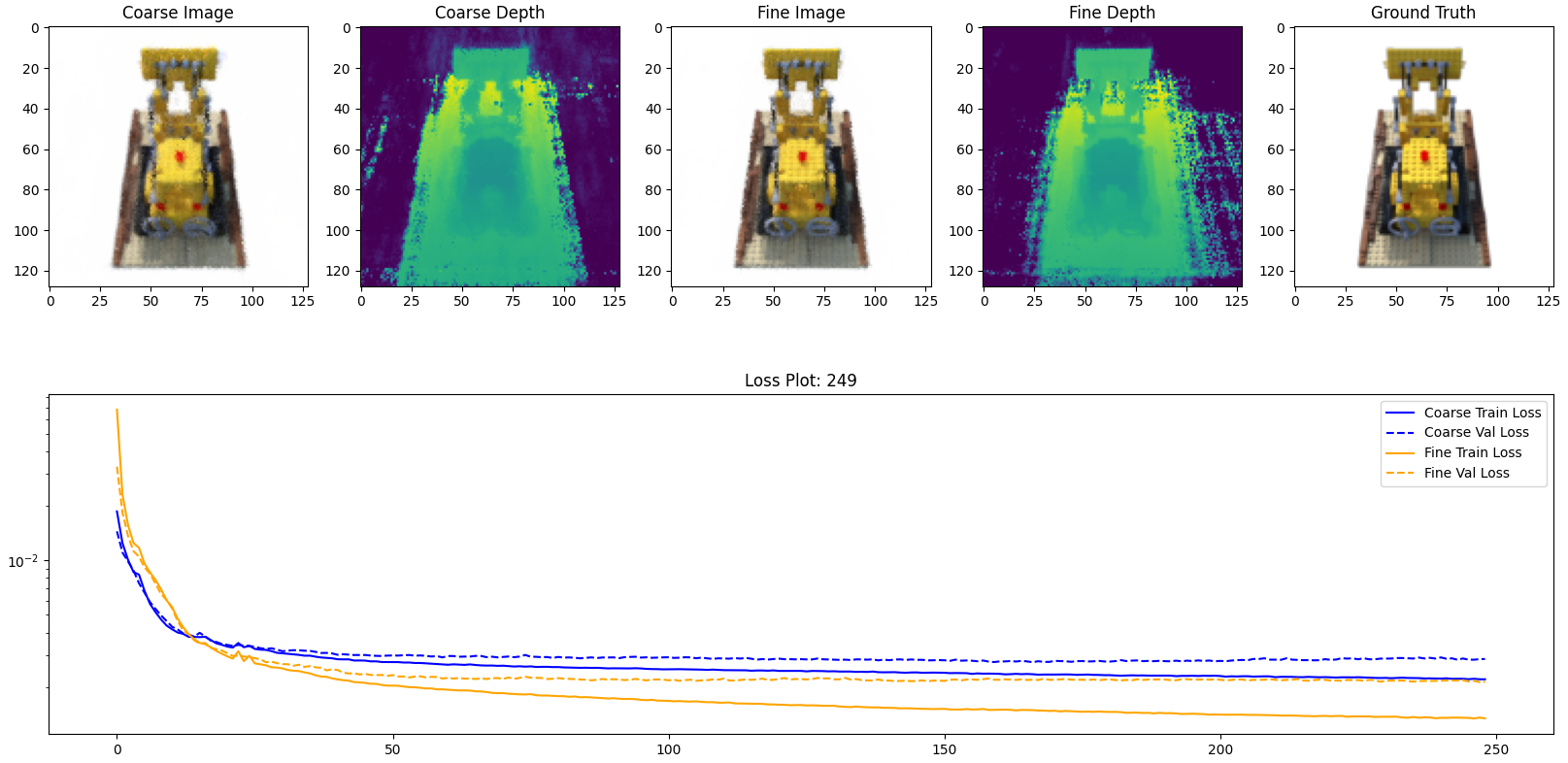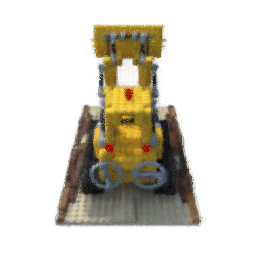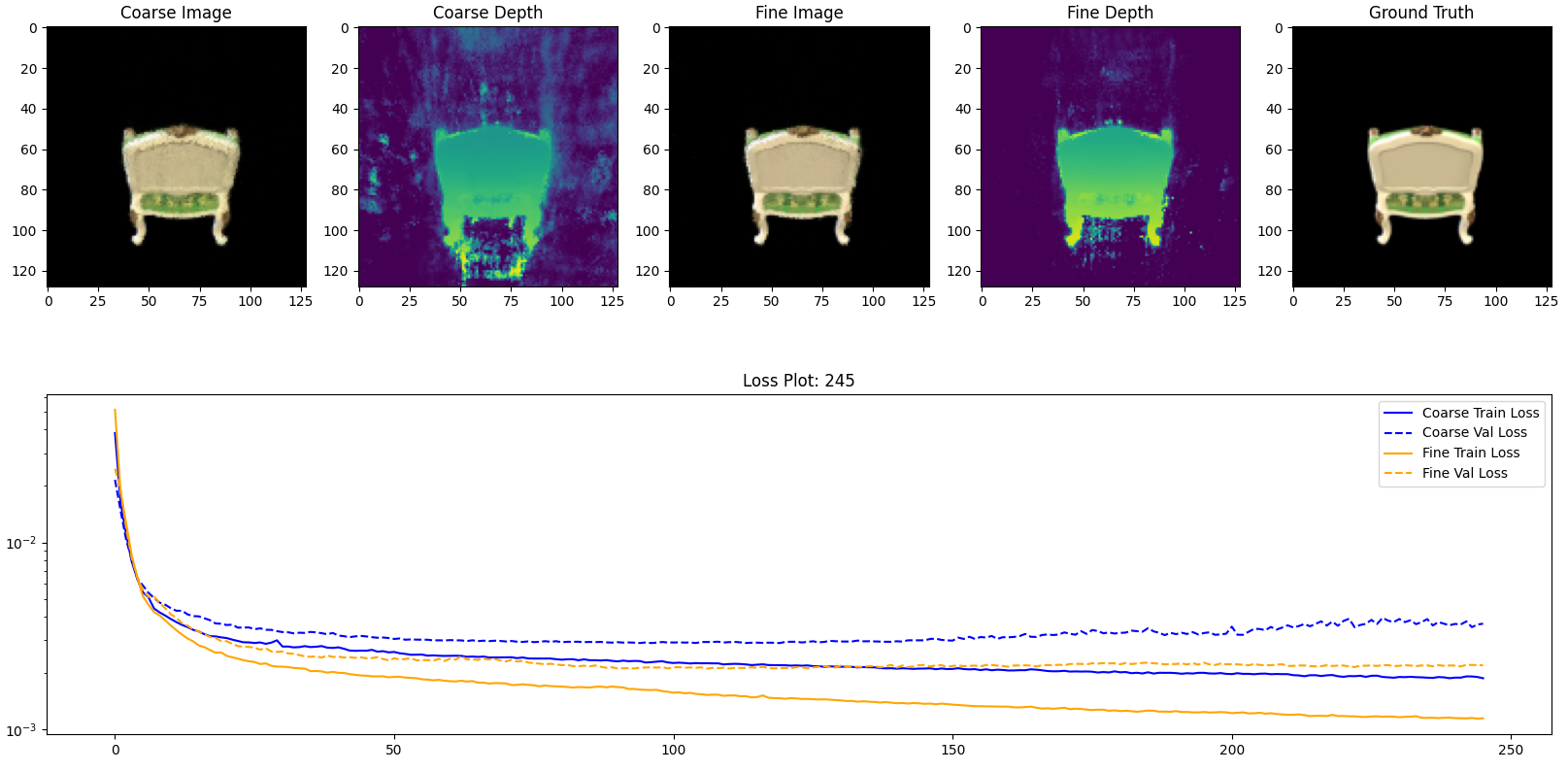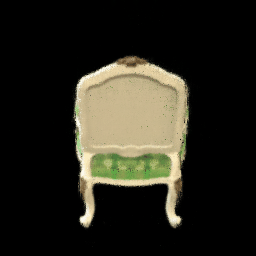NeRF TensorFlow v2 Keras Re-Implementation
[Work in Progress]
Author: Naufal Suryanto
Quickstart
1. Prepare dataset
- Download the
nerf_syntheticdataset from NeRF Official [Here] - Extract the dataset to
datafolder. The recommended structure isdata/nerf_synthetic/[object_name]
2. Install the dependencies
- Make sure that you have install all dependencies
- To install the dependencies, you can run
python3 -m pip install -r requirements.txt
3. Run the tests [optional]
- Run the tests to make sure that all functions can be run as expected
python3 -m pytest .
4. Run the training code
- Single GPU: If you only have a single gpu, run the training code
train_single.py - Multiple GPUs: If you only have multiple gpu, run the training code
train.py. The batch size will be multiplied by number of GPU instances - Examples:
python3 train.py --data_dir data/nerf_synthetic/lego --img_wh 128 --batch_size 2 --name lego_128 --ray_chunks 2048 --white_bgpython3 train_single.py --data_dir data/nerf_synthetic/chair --img_wh 128 --eagerly --name chair_128 --ray_chunks 4096
- By default, the logs and trained model can be seen on
logsandmodelsdirectories, respectively
5. Run the inference code
- After complete training the model, we can run the inference code to generate 360 degrees rotation of the model
- Run the inference code, for example:
python3 inference.py --model_dirs model/lego_128 --img_wh 256 --name lego_128_256 - By default, the output gif can be seen on
outputdirectory
Results
| Training Logs | Inference |
|---|---|
 |
 |
 |
 |
Implementation and Features
NeRF Model
- Positional Encoding
- Coarse and Fine Model with Hierarchical Sampling
Training Supports
- Single or multiple GPU training
- Split the MLP prediction into chunks for fitting GPU memory (tune
--ray_chunksargument to fit your memory; should be a factors of image_height * image_width * batch_size) - [Default] Use graph execution with tf.function for better performance (but may take longer initialization and larger memory usage)
- [Optional] Use eager execution for faster initialization and lower memory usage (include
--eagerlyoption when run the code, but currenly only works on single GPU training) - Black or White Background (include
--white_bgoption when run the code for better result) - Log the training history in CSV, plot image, and sample image
- Continue model training from last logging step
References
Code Implementation Inspired by
- Official Keras Code Example for NeRF: [Link]
- Awesome NeRF PyTorch Implementation: [Link]
- NeRF Implementation Tutorial by PyImageSearch: [Part-1] [Part-2] [Part-3]
Original Project Page
- NeRF: [Project Page] [Paper] [Code]